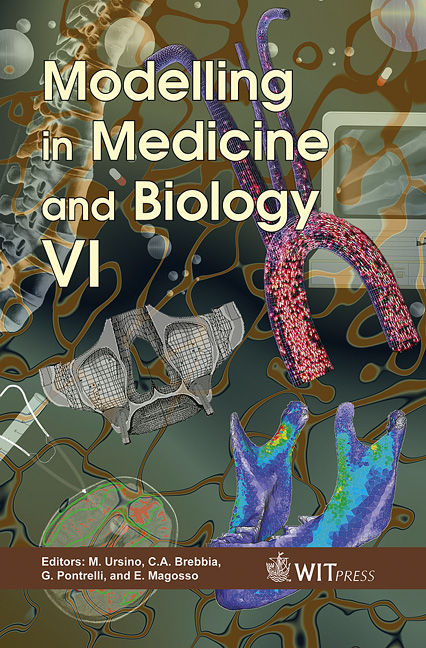Numerical Analysis For Muscle Forces Supporting The Cervical Spine
Price
Free (open access)
Transaction
Volume
8
Pages
10
Published
2005
Size
1,094 kb
Paper DOI
10.2495/BIO050391
Copyright
WIT Press
Author(s)
S. Tadano & T. Katagiri
Abstract
This paper describes a method of numerical analysis to simulate the muscle forces supporting the cervical spine in motion from flexion to extension. Each of twenty-one muscles was modelled by single or multiple lines from the origin area to the insertion point on the skeleton. These locations were measured by the X-ray CT and MRI images of a male volunteer. The posture of cervical vertebrae in motion was also measured by the plane X-ray examination. Under static conditions, twenty-four equilibrium equations on force and moment were formulated to solve 222 unknown parameters of muscle and joint reaction forces. The optimization analysis using the SQP method was applied to calculate this indeterminate problem. The objective function was expressed as the sum of the squares of muscle force divided by the physiological cross sectional area of each muscle. Results obtained by the analysis have been matched to the measured electromyographic activity. Keywords: biomechanics, muscle force, numerical analysis, cervical spine, optimization, cooperative motion. 1 Introduction The biomechanical function of the cervical spine is to protect the spinal cord, support the skull, and enable diverse head movement. Knowledge of biomechanics provides an essential framework for understanding the consequences of injury and disorders [1]. A complex system of ligaments, tendons and muscles helps to support and stabilize the cervical spine (fig. 1). Muscles contract and relax in response to nerve impulses originating in the brain. Every degree of freedom of motion in the cervical spine is actuated and
Keywords
biomechanics, muscle force, numerical analysis, cervical spine, optimization, cooperative motion.





